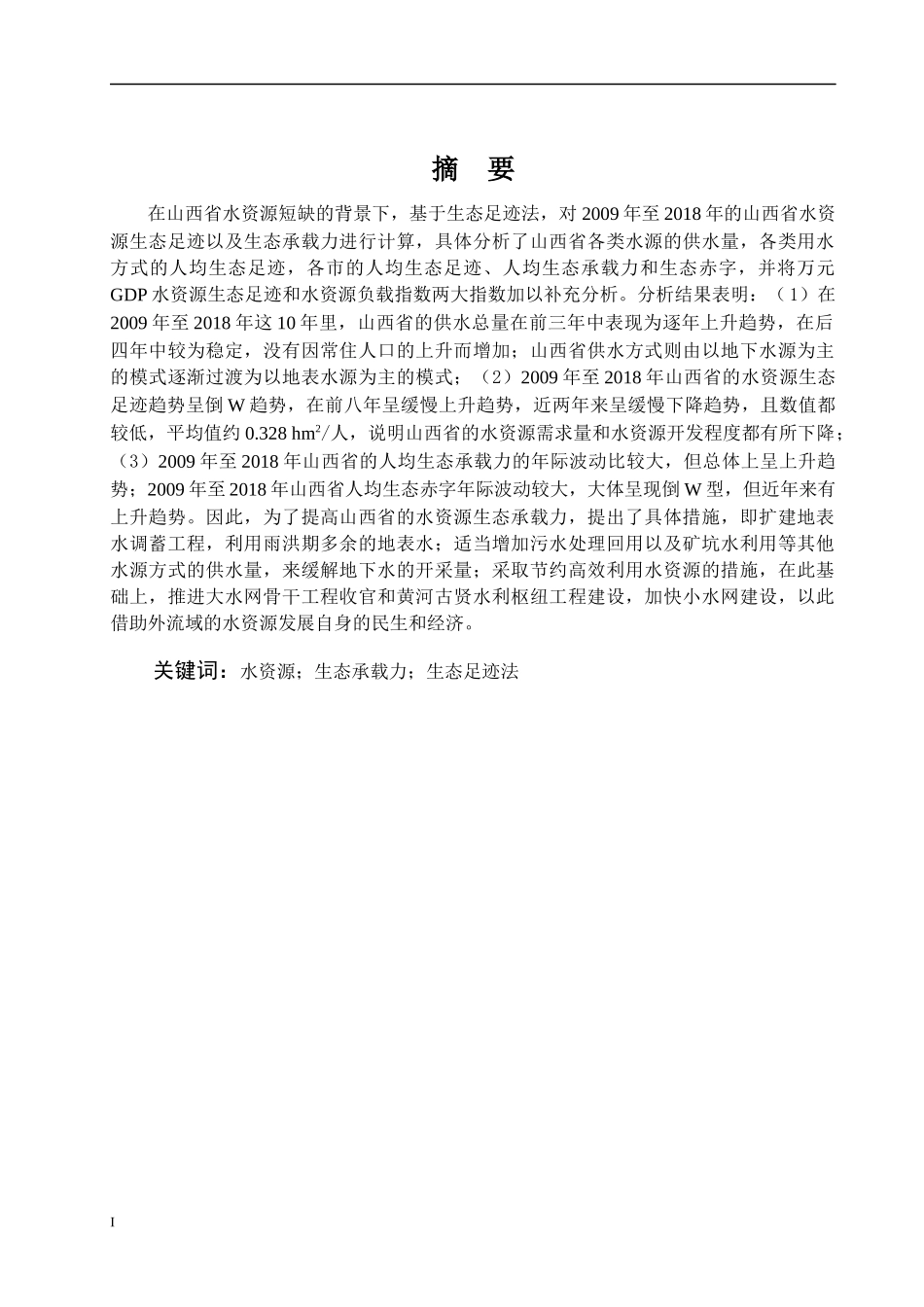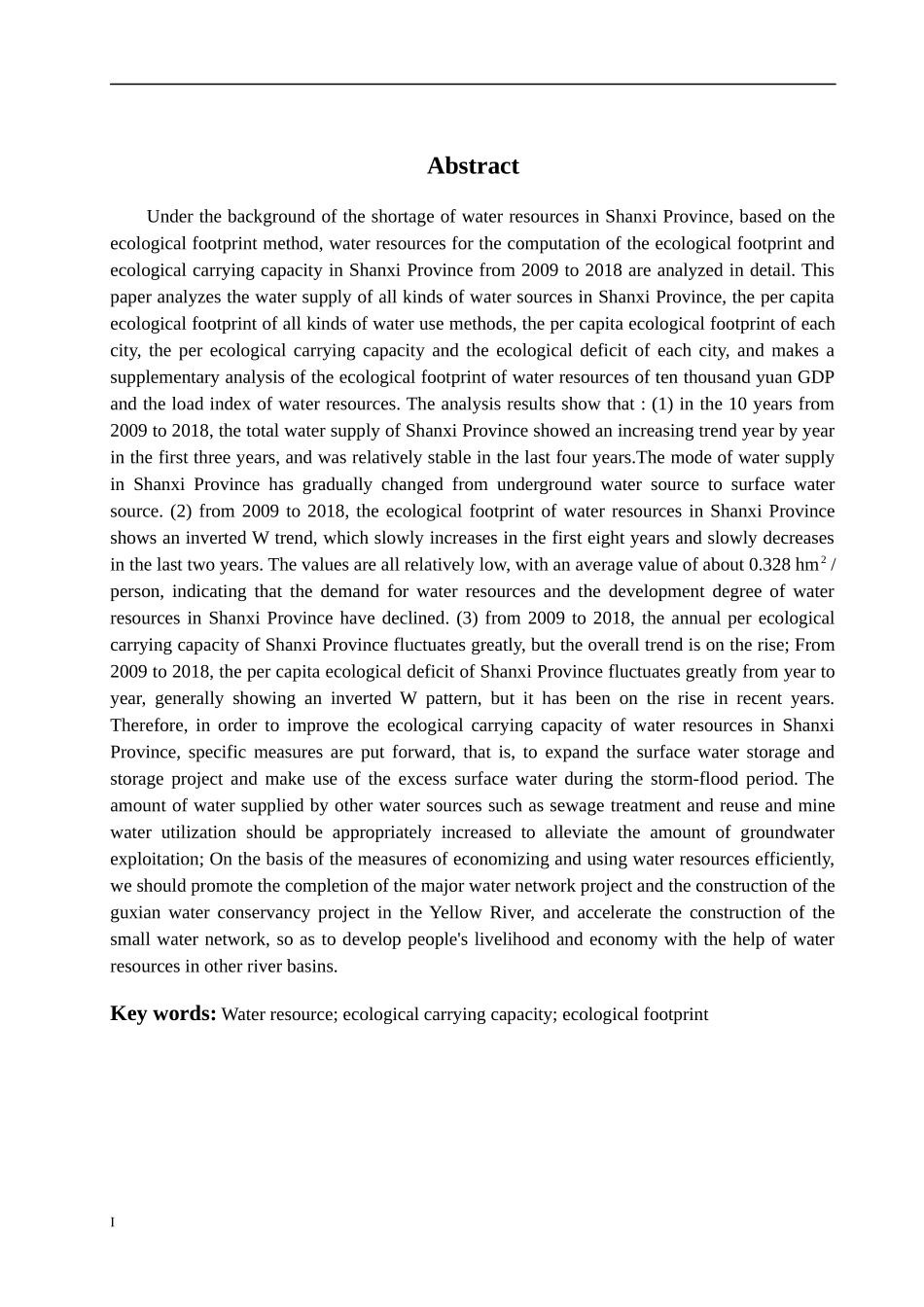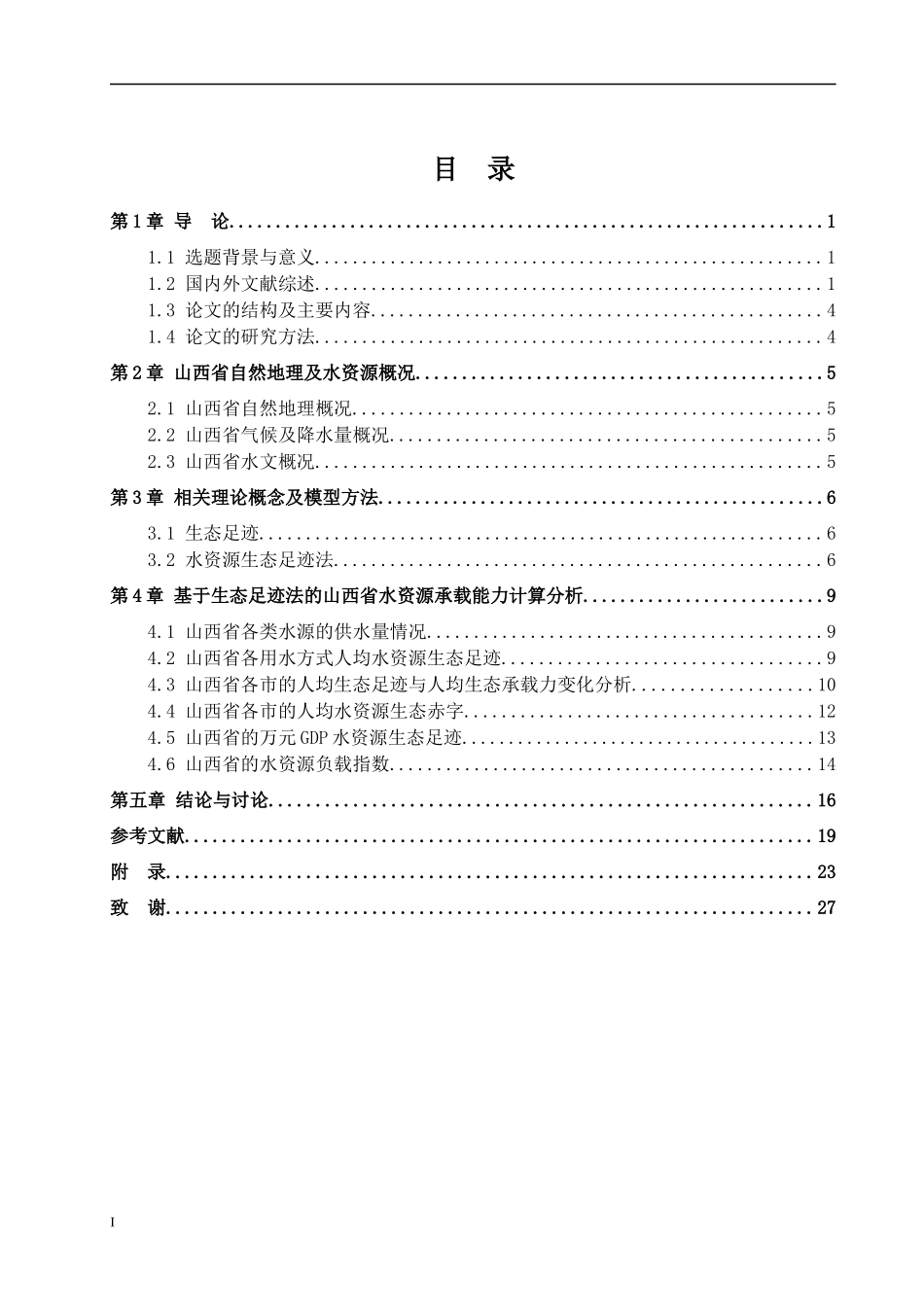摘 要在山西省水资源短缺的背景下,基于生态足迹法,对 2009 年至 2018 年的山西省水资源生态足迹以及生态承载力进行计算,具体分析了山西省各类水源的供水量,各类用水方式的人均生态足迹,各市的人均生态足迹、人均生态承载力和生态赤字,并将万元GDP 水资源生态足迹和水资源负载指数两大指数加以补充分析。分析结果表明:( 1)在2009 年至 2018 年这 10 年里,山西省的供水总量在前三年中表现为逐年上升趋势,在后四年中较为稳定,没有因常住人口的上升而增加;山西省供水方式则由以地下水源为主的模式逐渐过渡为以地表水源为主的模式;(2)2009 年至 2018 年山西省的水资源生态足迹趋势呈倒 W 趋势,在前八年呈缓慢上升趋势,近两年来呈缓慢下降趋势,且数值都较低,平均值约 0.328 hm2/人,说明山西省的水资源需求量和水资源开发程度都有所下降;(3)2009 年至 2018 年山西省的人均生态承载力的年际波动比较大,但总体上呈上升趋势;2009 年至 2018 年山西省人均生态赤字年际波动较大,大体呈现倒 W 型,但近年来有上升趋势。因此,为了提高山西省的水资源生态承载力,提出了具体措施,即扩建地表水调蓄工程,利用雨洪期多余的地表水;适当增加污水处理回用以及矿坑水利用等其他水源方式的供水量,来缓解地下水的开采量;采取节约高效利用水资源的措施,在此基础上,推进大水网骨干工程收官和黄河古贤水利枢纽工程建设,加快小水网建设,以此借助外流域的水资源发展自身的民生和经济。关键词:水资源;生态承载力;生态足迹法IAbstractUnder the background of the shortage of water resources in Shanxi Province, based on the ecological footprint method, water resources for the computation of the ecological footprint and ecological carrying capacity in Shanxi Province from 2009 to 2018 are analyzed in detail. This paper analyzes the water supply of all kinds of water sources in Shanxi Province, the per capita ecological footprint of all kinds of water use methods, the per capita ecological footprint of each city, the per ecological carrying capacity and the ecological deficit of each city, and makes a supplementary analysis of the ecological footprint...


